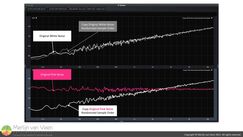 Figure 1What happens when you randomize the sample order of pink noise? Let's start with white noise first.
Figure 1What happens when you randomize the sample order of pink noise? Let's start with white noise first.
When you randomize the sample order of a white noise signal (constant amplitude over frequency), its frequency spectrum remains white afterwards.
The top plot of Figure 1 shows two copies of the same 1‑second long white noise signal where in once instance the sample order has been randomized (using Audacity and Microsoft Excel). Notice that—regardless of the sample order—the spectrum remains white.
Since these are exactly the same samples, albeit in a different order, crest factor (peak‑to‑rms amplitude ratio)—for the total duration of the signal—is identical.
Because noise is inherently random, so far, none of this should come as a suprise.
However, if we randomize the sample order for a 1‑second long pink noise signal (equal power per octave), its frequency spectrum changes from pink to white (bottom plot Figure 1).
Again—these are exactly the same samples—albeit in a different order, so crest factor (peak‑to‑rms amplitude ratio) is preserved once more. But, it is safe to say that pink noise sounds significantly different from white noise.
In the video above, track 1 is the original white noise, track 2 is a duplicate where sample order has been randomized, track 3 is the original pink noise, and track 4 is a duplicate where sample order has been randomized. The results speak for themselves.
When you pay attention to the fine structure, you can hear the 1‑second loop, but other than that—with exception of the sole original pink noise—the tonality or timbre is functionally the same.
What we can take away from this short noisy story is that, there is something very delicate about pink noise that is subject to time, i.e., when we mess with the timing, pink noise's unique property—equal power per octave—is at stake.
Unlike white noise, it appears that pink noise has properties which are not so random after all... This has very interesting consequences, some of which you can read about here.
In my personal journey, credit for this goes to David "Dave" W. Gunness and the development of AES standard AES2-2012: Methods of measuring and specifying the performance of loudspeakers for professional applications. I have merely put the story into images and sound.
